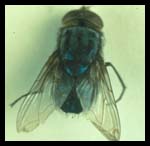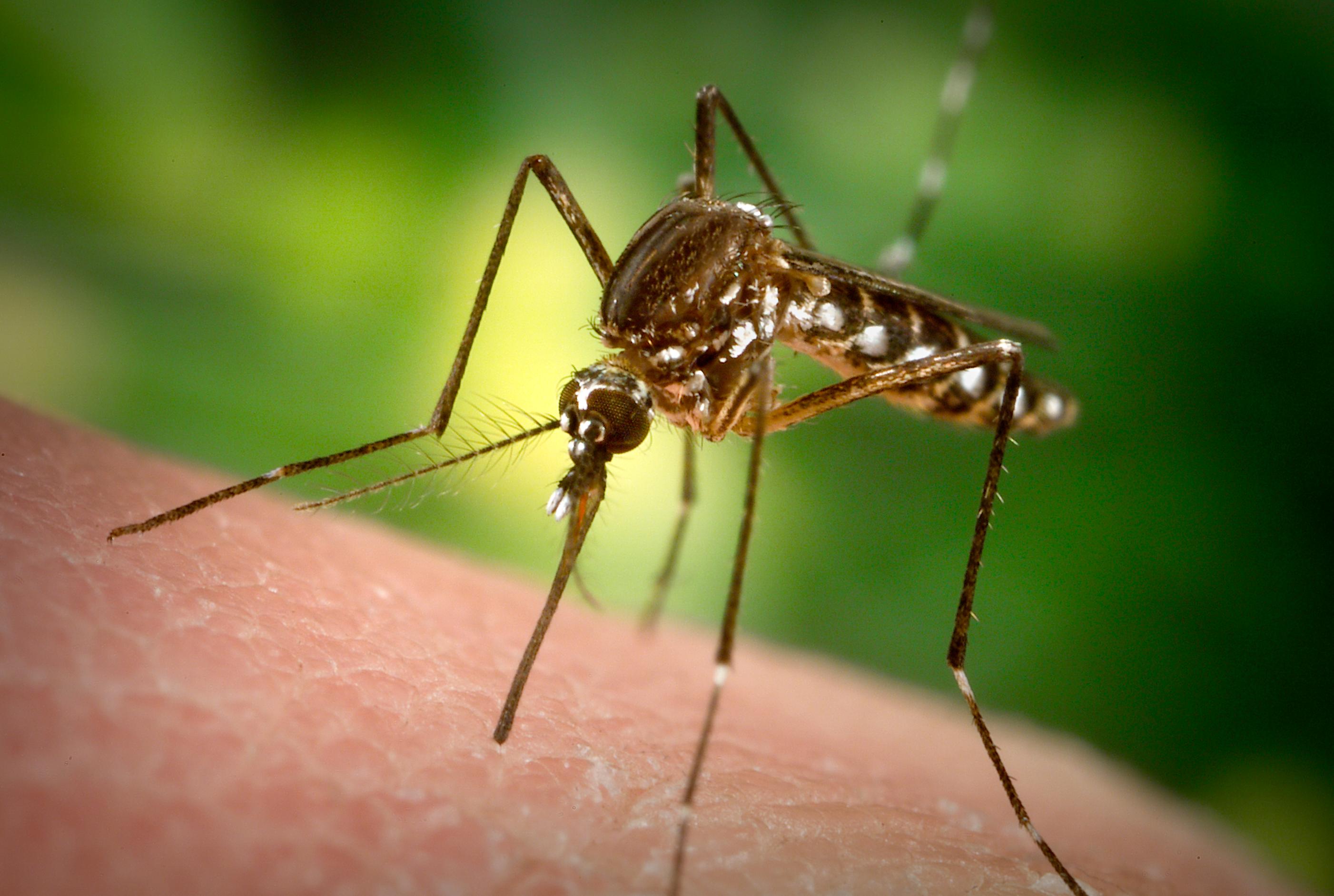 |
Cochliomyia hominivorax, referred to as the primary screwworm causes obligatory myiasis (feeds on live flesh as a primary source of food) and is a major economic pest. |
Description:
The female is attracted to fresh open wounds on any warm-bloodied animal. The wounds can range from a thorn scratch, insect or tick bite mark to a gaping laceration. The females are also attracted to the newborn umbilicus of calves, castrated calves, and dehorning, branding or shearing wounds. The female screwworm will quickly lay 100-300 eggs on the dry perimeter of the wound.
In less than 24 hours, larvae hatch from the eggs and begin to feed on the open wound. It will take 1-2 weeks for the larvae to become fully developed, in that time they will consume a large amount of dead and live flesh.
Veterinary Impact:
Untreated screwworm infestations can be fatal. The larvae will continue to feed on the animal and will eventually eat the host alive.
Animals attacked:
Open wounds or infected sores of mammals
Control:
Topical sprays, aerosols, rubs and pour-ons can all provide protection from blow fly attacks. The most effective control measure is to treat all wounds immediately and properly. Any animal with a severe wound should not be left untreated or out in the pasture unprotected.
The most effective control measure against the primary screwworm was successfully managed years ago with the Primary Screwworm Eradication Program. Sterile males were released in the wild throughout the southeastern US to prevent further egg production. The primary screwworm has been officially removed from the US for several decades but small infestations arise from time to time throughout the US on animals that have been taken outside of the country.
Click here for article Poster on Screwworm Eradication Project
Article provided by Bart Drees
Immediately isolate any suspected animals and contact:
• Your local veterinarian
• Texas Animal Health Commission: 1-800-550-8242
• U.S. Department of Agriculture Veterinary Services: (512) 383-2400





